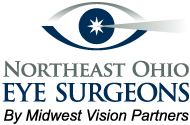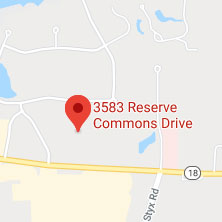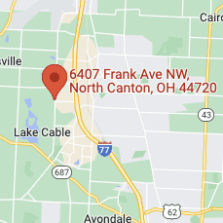Are You a Candidate for LASIK?
LASIK—which stands for laser-assisted in situ keratomileusis—is a common type of laser vision correction procedure. The first step in the LASIK surgery process is determining whether you’re a good candidate. There will be a lot of questions like “How old do you have to be for LASIK?” and others that will be answered. This candidacy process helps the doctors at Northeast Ohio Eye Surgeons provide the highest-quality, most personalized vision care to every patient who walks through our doors.
More than 25% of our patients are deemed ineligible for LASIK surgery. Ineligible candidates may qualify for one of the other vision correction procedures we offer, like PRK, SMILE, or Custom Lens Replacement. If you don’t qualify for any of these procedures, our team will help you find the right alternative treatment option.
Why You Might Not Be a Candidate for LASIK
Some patients aren’t LASIK candidates for various reasons. While doctors can sometimes determine patient candidacy during the initial LASIK consultation, other scenarios call for a thorough preoperative eye exam. Your doctor can determine at any point during the exam that you’re not a LASIK candidate. Here are the top five reasons why patients don’t qualify for LASIK:
1. Corneal Thickness
LASIK reshapes the cornea by using a laser beam to remove small amounts of damaged corneal tissue. The higher a patient’s vision prescription, the more tissue the laser must remove to correct their vision. LASIK also creates a corneal flap—a thin layer of the cornea that’s generally between 110 and 150 microns thick. The average cornea is thinnest in the center and becomes thicker around the edges. A healthy cornea is roughly 535 to 550 microns thick in the center.
Before undergoing LASIK, your doctor will estimate how thick your corneas will be after the procedure. If your corneas are thinner than average, you may not be a LASIK candidate. That’s because you wouldn’t have enough tissue remaining to maintain the cornea’s strength after the procedure. A patient who has thick corneas but a high vision prescription also may not be a LASIK candidate.
Patients who don’t qualify for LASIK due to thin corneas may qualify for SMILE (Small Incision Lenticule Extraction) or PRK (Photorefractive Keratectomy). Keep in mind that both of these procedures still involve the removal of corneal tissue. If you’re unsure whether you qualify for LASIK, SMILE, or PRK, talk to your eye doctor.
2. Keratoconus
Keratoconus is a vision condition that weakens and thins the cornea over time, causing the eye’s surface to become distorted. It occurs in patients of all ages. Patients who have keratoconus shouldn’t undergo LASIK surgery because it will cause the cornea to become even weaker and thinner. During the preoperative exam, your doctor will analyze your corneas’ thickness using advanced technology to determine whether you have keratoconus.
3. Dry Eye
Patients who suffer from chronic dry eye also don’t qualify for LASIK. Your Northeast Ohio Eye Surgeons doctor will recommend treating your dry eye symptoms before seeking laser vision correction surgery. Since LASIK causes temporary eye dryness for four to six weeks—and can even cause permanent eye dryness—your doctor may recommend that you forgo laser vision correction surgery altogether.
SMILE and PRK are alternative vision correction procedures that are less likely to cause or exacerbate eye dryness.
4. Cataracts
A cataract occurs when the eye’s natural lens becomes cloudy, causing it to blur vision. Since cataracts typically develop as a result of aging, they’re most common in older adults. However, they can also develop as a result of eye trauma or medication.
Patients who have cataracts aren’t good LASIK candidates because a clouded lens due to cataracts can’t be corrected by LASIK surgery. Thankfully, modern cataract technology can often provide vision correction comparable to LASIK.
5. Other Eye Diseases and Health Conditions
Additional reasons for not being a good LASIK candidate include the following:
- You are under the age of 17
- You have another vision condition, like macular degeneration, diabetic retinopathy, or glaucoma
- You take certain prescription medications that could interfere with laser vision correction
- You have an unstable prescription
- You are pregnant or nursing
Your Expectations About Laser Vision Correction
It’s important to set realistic expectations before undergoing LASIK surgery. The goal of LASIK surgery is to reduce or eliminate one’s need for prescription glasses and contact lenses. Functional vision is the goal, which means having 20/40 vision or better in both eyes. Don’t go into the procedure expecting it to completely fix all your vision problems.
Determining Your Candidacy
Before pursuing LASIK surgery, schedule an appointment with your local Northeast Ohio Eye Surgeons provider to receive a thorough assessment of your eyes and to set expectations. This is a time for you to ask questions and address any concerns you have about the procedure. Your doctor will outline potential risks and have you sign consent forms asserting that you have acknowledged those risks. Your doctor may also require you to watch a video that discusses potential risks in more detail.
LASIK Risks
LASIK is a relatively low-risk procedure. However, it still comes with some potential risks that you should be aware of before pursuing surgery. Some risks of this laser vision correction include the following:
- Dry Eye: LASIK surgery can cause temporary or permanent eye dryness. Our doctors recommend using artificial tears to help lubricate the eyes during the recovery process to prevent dry eye problems. Take the Dry Eye Self-Test
- Glare Halos and Double Vision: You may notice a glare or halo effect around car headlights when driving at night. This side effect typically only lasts for the first few weeks after your LASIK procedure but can last longer in some patients. A second laser correction procedure can improve this condition in some cases.
- Over and Under-Corrections: Your doctor may over-correct or under-correct your prescription due to human error or the inability to predict how your eyes will heal. Over and under-corrections can be corrected after the eyes have fully healed, but there’s no guarantee.
- Corneal Flap Issues: Some LASIK procedures can cause the outermost layer of cornea tissue to grow abnormally underneath the corneal flap during the healing process. This abnormal growth is known as epithelial ingrowth. It can be treated surgically but may occur more than once.
- Vision Loss or Changes: Unforeseen surgical complications can cause a patient to experience vision changes and even vision loss after the procedure. This risk is uncommon but still possible.
- Neuropathic Corneal Pain (NCP): NCP is a condition that occurs in roughly 0.1% of LASIK patients. It causes oversensitivity in the eyes, face, or head. There is no known cause of NCP.
The FDA and LASIK
The Patient-Reported Outcomes With LASIK (PROWL)
In October 2009, the National Eye Institute (NEI), the Department of Defense (DoD), and the FDA launched the LASIK Quality of Life Collaboration Project (LQOLCP) to examine the potential risk of severe problems occurring in patients after LASIK surgery. The project’s goal was to develop a tool that would:
1. Help determine the percentage of patients who have trouble performing normal activities after undergoing a LASIK procedure
2. Identify predictors for those patients
The PROWL studies assessed visual symptoms in patients before and after LASIK surgery to identify changes over time. The studies also measured the impact of symptoms on the performance of normal activities. The results showed that less than 1% of study participants experienced significant difficulty with or an inability to perform normal activities without corrective lenses due to any one visual symptom (starbursts, ghosting, halos, glare) after LASIK surgery. More than 95% of participants were satisfied with their vision following LASIK surgery.
The Decision Checklist
In July 2022, the FDA drafted a document recommending that doctors share a decision checklist with their patients. The document—which is now finalized as of 2/9/23—focuses on the risks associated with LASIK surgery and notes that some patients have become severely depressed due to post-surgery complications. The decision checklist states that certain chronic conditions like diabetes and some medications may put patients at risk for poor outcomes. The FDA is currently collecting LASIK concerns regarding this drafted document.
If you have questions or concerns regarding the safety of LASIK surgery, contact Northeast Ohio Eye Surgeons today to speak with one of our eye doctors.


Sources Cited
Lasik Quality of Life Collaboration Project (2011) National Eye Institute. https://www.nei.nih.gov/about/news-and-events/news/lasik-quality-life-collaboration-project/
Considering lasik surgery (2021) Mayo Clinic. https://www.mayoclinic.org/tests-procedures/lasik-eye-surgery/in-depth/lasik-surgery/art-20045751














Recent Comments